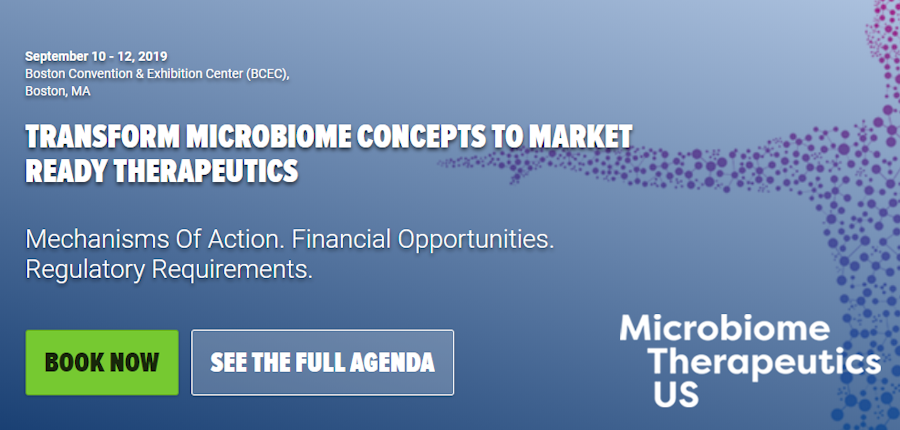The regulatory hurdles to microbiome therapeutic commercial success

Harnessing the human microbiome for therapeutic use is one of the most exciting emerging fields right now. However, in such an experimental and unknown area of research, it is inevitable that there are still huge question marks around the regulatory environment and microbiome therapeutic commercial success hinges on overcoming these regulatory hurdles. We spoke to eight industry experts to explore what the major issues are and how they can be overcome.
Dr Lee Jones, Founder, President and CEO, Rebiotix
‘I believe that the biggest regulatory hurdle facing the microbiome space is that each and every company has a unique product with unique approaches to defining the product. This, along with a lack of information on the mechanism of action of the products themselves, creates a very difficult environment for the regulators in that every product must be evaluated on their own scientific merits. It will be difficult, if not impossible, to set standards for the industry to follow. The complex interplay between the microbiota and the host, as well as the microbes among themselves, may require creative approaches to designing clinical studies to demonstrate outcomes. That has been our experience at Rebiotix to date.’
Dr Jones is speaking at Microbiome Therapeutics US on 'The Science, Business and Growth of the Microbiome Frontier' in Boston on 10 September.
Dr Chengwei Luo, CEO, DeepBiome Therapeutics
‘Currently there are a lot of concerns around the "bugs-as-drugs" modality, and lots of them need to be addressed before the regulatory bodies give the green light to these live bacterial therapeutics. One key issue is that we still don't, or simply cannot, understand how a bug would behave in all the diverse environments everyone's gut presents. The root is simply we don't understand every single component of the bug that we deliver as a drug, and this is very different from how traditionally drugs have been tested before getting regulatory approval.’
Dr Chengwei Luo is speaking at Microbiome Therapeutics US on 'Unleashing the power of microbiome with AI, Synthetic Biology, and Beyond' in Boston on 10 September.
Jack Gilbert, Professor, Department of Pediatrics and Scripps Institution of Oceanography, University of California San Diego; Author, Dirt is Good - @GilbertJackA
‘Regulating probiotics is key - identifying ways to manage the effectiveness, safety and storage of these live therapeutic options will be essential. We know how to regulate small molecules as drugs, but live therapeutics are a real problem. The current state of probiotic commercial activity is concerning due to the vagueness of claims, the surety of safety without solid data on long term impacts, and the possibility of bleed over into clinical use. I am heartened by the large number of stage 3 clinical trials which should help to usher in a new future, but I won't hold my breath for the first FDA approved probiotic intervention for clinical use.’
RELATED ARTICLE: The Regulatory Environment of Microbiome-Based Therapies in the US and EU - WHITEPAPER
Martha Carlin, CEO, The BioCollective
‘The microbiome present new regulatory hurdles for microbiome therapeutics, but also for the existing drug paths for oral medications. Current research presents clear data on the transformation of drugs by bacteria in the gut and this should present an additional regulatory requirement for understanding the impact of a drug ON the microbiome as well as understanding the impact of a particular microbiome ON the drug’s metabolism. This adds an entirely new layer of complexity to pharmacokinetics.
I find the ensuing battle between fecal microbiota transplants and ecobiotics or microbial cocktails one of the more interesting regulatory battles. Logically if the microbiome is failing due to loss of species and diversity then an FMT is more likely to contain a broader group of organisms that can fill the gaps. However, from the regulatory perspective it is obviously much easier to review and approve a smaller group of organisms and their specific actions. I believe there is a place for each of these paths, but it seems that there is a battle heating up to try to knock FMT out of the potential mix.
While bacterial components have been used as adjuvants in vaccines for years, there does not seem to be a clear framework for the use of lysates, supernatants or fractionated cell wall components as therapeutics. This seems to me to be one of the more promising and potentially less risky areas of future pursuit.
Finally, I think perhaps the framework needs to consider “genes” rather than organisms, as the microbiome is a continuum of inter-microbial trade making the lines blur over time. Is there really a clear and consistent distinction between species in the gut and do we even have the tools to properly determine and evaluate this?’
Martha Carlin is speaking at Microbiome Therapeutics US on 'Standardizing Microbiomics: Collection, Purification and Analysis' in Boston on 10 September.
Regina Au, Principal, New Product Planning Consultant at BioMarketing Insight
‘The biggest regulatory hurdle is that the field is new and the FDA is trying to figure it out too while providing the best approach for industry guidance. From my understanding, the FDA has been working with industry in developing this guidance and is open to meeting with companies very early in providing guidance.
If one is developing a drug, the requirements have not changed, but if one is developing a dietary supplement or a conventional food, the requirements have gotten a little more stringent in the Chemistry Manufacturer and Control (CMC) perspective. However, one should always check with a regulatory expert as things are constantly changing.’
Regina Au is speaking at Microbiome Therapeutics US on 'Important Early Considerations to Developing a Successful Commercial Strategy' in Boston on 11 September.
Gitte Pedersen, CEO and Co-founder Genomic Expression - @DNABarcode
‘Some of these bugs are difficult to culture outside the body. I spend a lot of time working in fermentation so I know how it’s done. I believe that we can potentially overcome this if we better understand the role specific organisms play in the microbiome and that means we have to move beyond sequencing 16s and start looking at expression which is what Genomic Expression does. In other words, look at the expression of all genes in the microbiome and not just what one organism does, and then deconvolute that to a better understanding of health and disease.
The above approach will also help regulators get comfortable with the idea that bugs are good for you. Obviously, we need to be able to control all variables in the manufacturing of the organism, however that is something that we have done before starting with genetic engineering of insulin so I am confident we can do it again.
The only thing I am not sure I like is the idea of fecal transplants. Its messy and how do you control the supply and quality? We have to move from POC in those messy situations to a formulated controlled product that is not directly derived from another human.’
RELATED ARTICLE: Is the future of microbiome research already here?
Bharat Dixit, VP of Bioprocess and Analytical Development, Finch Therapeutics
‘Alignment among regulatory authorities across countries/global market is the biggest regulatory hurdle to microbiome therapeutic commercial success.’
Bharat Dixit is speaking at Microbiome Therapeutics US on 'Options & Challenges for Small & large companies; implement your own microbiome division, or buy a company working in the microbiome space?' in Boston on 11 September.
Peri Aghadiuno, Medical Director, Clara Desvignes, Senior Regulatory Scientist, and Cécile F. Rousseau, Director, at Voisin Consulting Life Sciences - @VCLSsocial
'There is currently no dedicated regulatory framework for microbiome therapeutics: a start was initiated in the US with Live Biotherapeutics Products (LBPs), nonetheless it does not include all possible microbiome related products.
These products are borderline and can be evaluated against different statuses: drugs (biologics or not), medical devices, food supplements. Regulatory requirements for each of these statuses may be quite different and lead the developer to face very specific challenges (For example, different regulatory authorities in charge leading to mismatched interaction opportunities).
The evaluation of microbiome therapeutics is required to provide data to support nonclinical (NC) and clinical development:
- NC assessment of microbiome medicinal products is to be provided to the regulatory agencies since safety, intended clinical dose and efficacy will need to be demonstrated.
- Difficulties of dose translation between NC and clinical are most likely expected.
- Although microbiome products provide new possibilities for disease prevention and treatment, established regulatory pathways for medicines in terms of clinical development may not always be applicable and straight forward for microbiome products and there may be a need for adaptive designs.
- Characterization and validation of relevant clinical endpoints for efficacy AND safety may be proven challenging.
In addition, the FDA’s current LBP guidance and microbiome-dedicated working group are paving the way for the development of a microbiome-focused regulation. This also demonstrates the need for a broader harmonized dedicated framework, including guidance release by EMA and other competent authorities.'
Aghadiuno, Desvignes and Rousseau are presenting on 'Navigating the regulatory landscape for microbiome therapeutics' at Microbiome Therapeutics US in Boston on 11 September.
